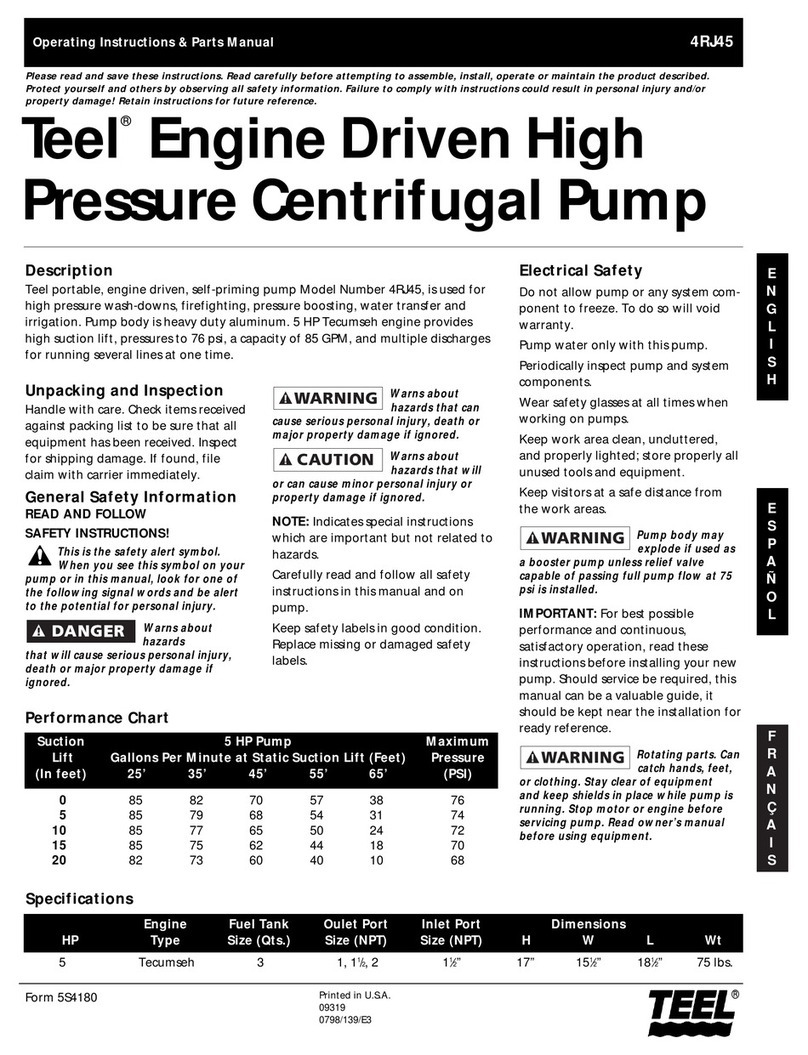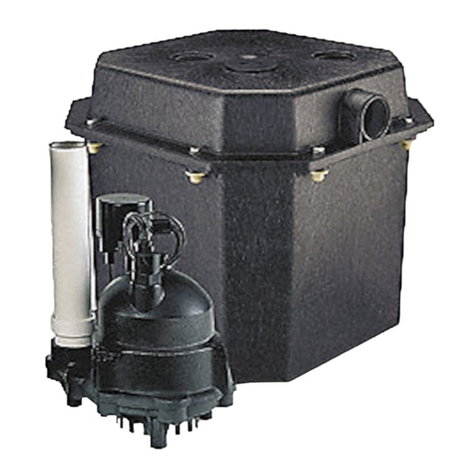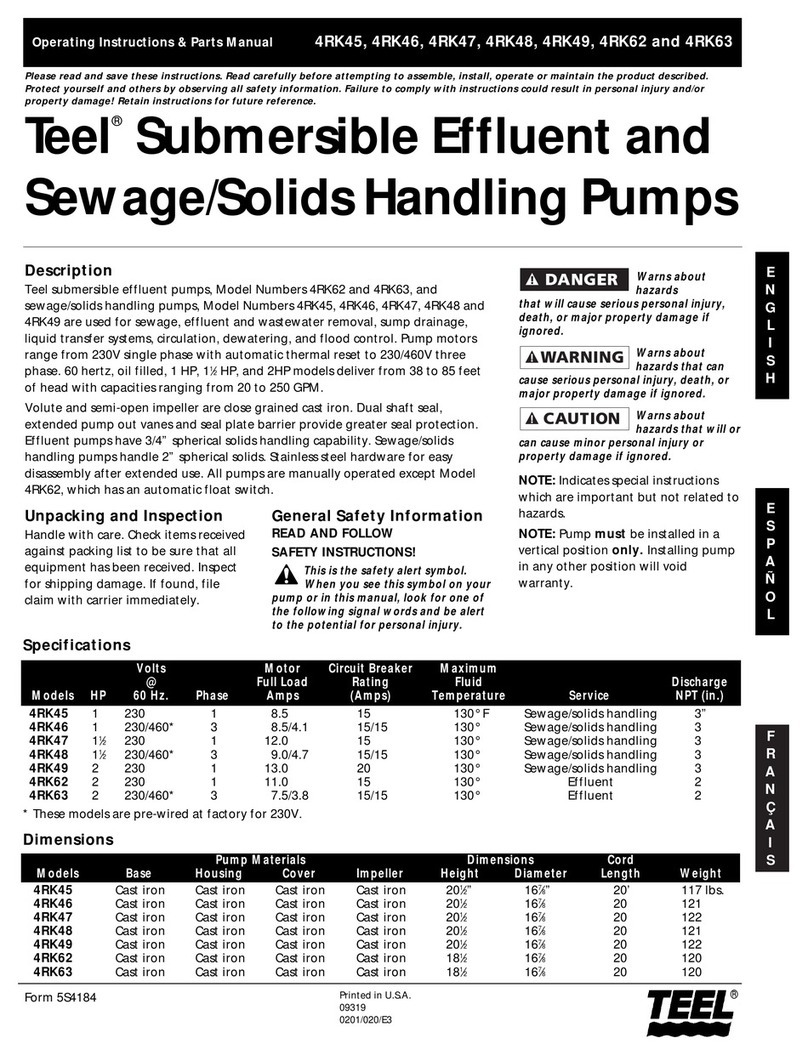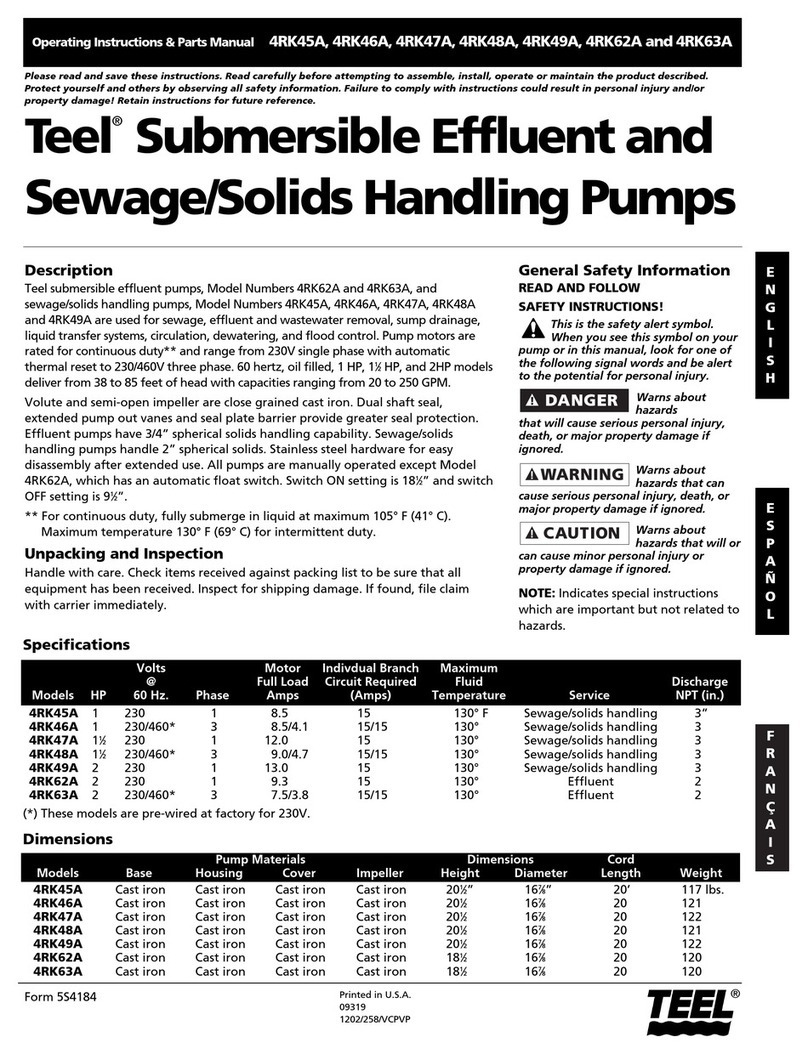Installation (Continued)
2. Inspect pipe for any foreign matter
or obstructions.
IMPORTANT: Make sure that no
foreign matter enters pipe openings
while installing pump.
3. Make sure foot valve operates
freely: attach to ejector with a close
nipple. Use Teflon tape on male
threads.
4. Install nozzle and venturi in deep
well ejector.
5. Using Teflon tape on male threads,
install special plastic pipe adapter
(supplied with ejector) by screwing
adapter into 11⁄4” tapped hole in
ejector body).
6. Thread a 1” plastic pipe adapter
into the 1” tapped hole in ejector
body.
7. Install sufficient plastic pipe in well
casing to place ejector at the proper
depth (Your well driller should
supply this information).
IMPORTANT: As a guide, the ejector
should be set at least 10 to 20 feet
below the lowest water level with
pump running, if possible, but always
at least five feet from the bottom of
the well.
8. Tighten all hose clamps securely on
plastic pipe. Use two clamps per
joint to prevent air leaks into
suction pipe. Clamp screws should
be on opposite sides of the pipe. Fill
pipes with water to make sure that
foot valve and connections do not
leak.
9. Install sanitary well seal on top of
well casing; use steel nipple through
well seal.
IMPORTANT: Align locating lugs on
adapter flange and pump base so that
pump discharge will be aligned with
piping.
10.Install 1” nipple in one side of
adapter flange. Slide threadless
coupling down over drive pipe
from well. Thread adapter flange
onto suction pipe from well and
align nipple and drive pipe.
11.Slide threadless coupling up and
secure nipple to drive pipe.
12.Remove paper backing from
adhesive gasket. Apply gasket to
adapter flange, making sure that
holes line up.
13.Align locating lugs on pump base
with locating lugs on adapter
flange; attach pump to flange with
cap screws provided.
14.See “Discharge Pipe Sizes” for
information regarding correct
discharge pipe size.
SINGLE PIPE EJECTOR
INSTALLATION (SEE FIGURE 2)
NOTE: Due to normal irregularities in
the cup seal leather and the inner
walls of the drop pipe, 2” packer jets
do not form a perfect seal. In a
dormant system, the pump will
normally cycle periodically to maintain
pressure on the system.
Single pipe installations require:
a.Galvanized steel pipe
b.Leather packer-type ejector with
built-in foot valve
c. Turned couplings (supplied with
packer-type ejector)
d.Well casing adapter.
1. Connect ejector to first length of
pipe. Use pipe joint compound
sparingly on male threads.
2. Lower pipe into casing. Use special
turned couplings (included with 2”
single pipe ejector package) to
increase water flow. Use pipe joint
compound sparingly on male
couplings threads.
NOTE: Fill pipe with water as each
length is added to be sure foot valve
and connections do not leak.
3. Add lengths of pipe until the ejector
reaches the proper depth (Your well
driller should supply this
information).
IMPORTANT: As a guide, the ejector
should be set at least 10 to 20 feet
below the lowest water level with
pump running, if possible, but always
at least 5 feet above the bottom of the
well.
4. To properly seat the cup seals, after
the ejector is correctly positioned
move the assembly up and down
slightly. Water pressure in the
casing will then soak the cup seals.
They should seal within 2-3 hours
after installation.
5. With ejector set, install well casing
adapter. Remove pipe holder. Align
locating lugs and tighten adapter to
form seal with well casing.
DISCHARGE PIPE SIZES
1. If increasing the discharge pipe size,
install reducer in pump discharge
port. Do not increase pipe size by
stages.
Models 3P740A, 4P037, 4P038, 4P039 and 4RJ96A
7
Teel Operating Instructions and Parts Manual
E
N
G
L
I
S
H
®
















































